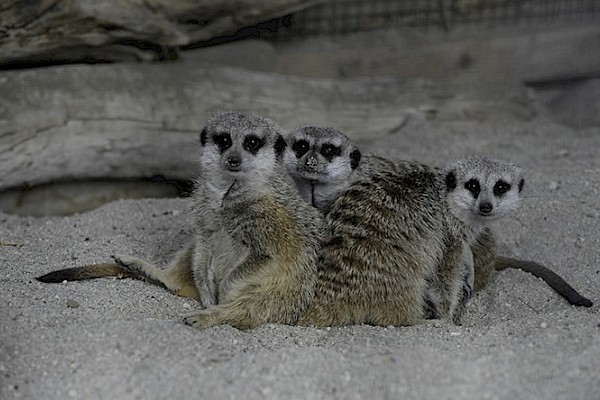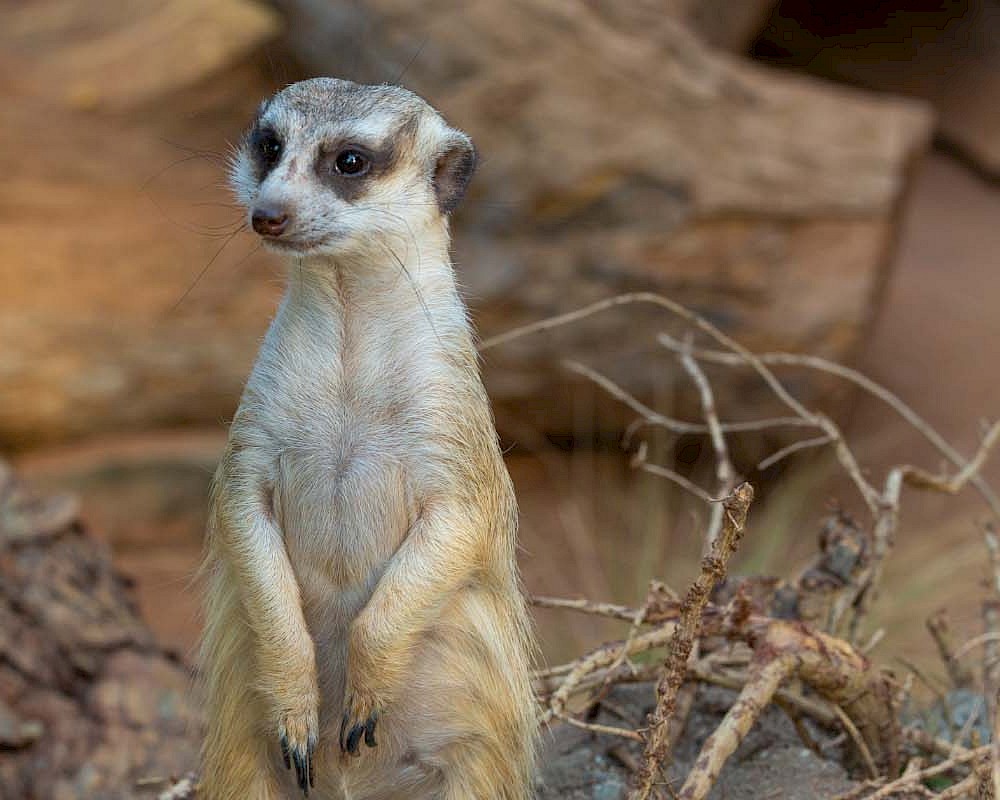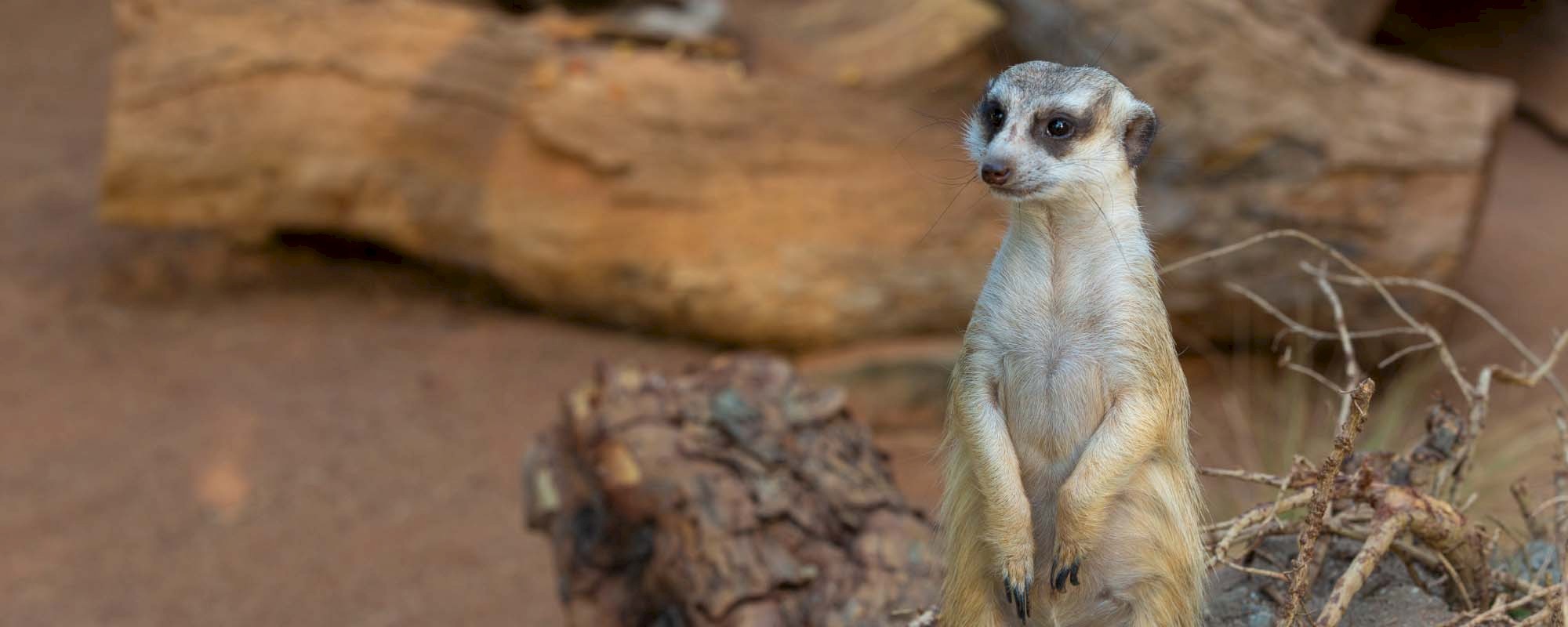

Meerkat
Suricata suricattaFamily
Viverridae; the mongoose familyConservation Status
Least concern, IUCN; not threatened.Range
Southwestern AfricaHabitat
Inhabit burrows on desert and savanna flatsHighlights
Whether out foraging or just playing near their burrows, there is always a “watch meerkat” posted to warn the group of approaching danger.Meerkats have small slender bodies, tan or gray with dark bands across the back and sides, a pointed nose, big dark eyes, small round black ears – which they can close to keep sand out – and a smooth slender tail with a black tip. Their claws are non-retractable and stout for digging. Meerkats are mostly insectivorous, but will also eat small mammals, birds, reptiles, bird and reptile eggs and sometimes tubers and fruits. Their predators include eagles, hawks, jackals and large snakes.
Meerkat packs can consist of up to 50 members. The alpha pair reserves the right to mate and will normally kill young that are not its own and even evict mothers of such offspring which may then form a group of their own. Two to four young are born, sparsely furred and blind. Group behavior is important during the breeding season for babysitting. One or more adults remain in the burrow to baby-sit while others go out to forage and feed. Thus, the young are cared for by their fathers, uncles, aunts and cousins as well as their mothers.









